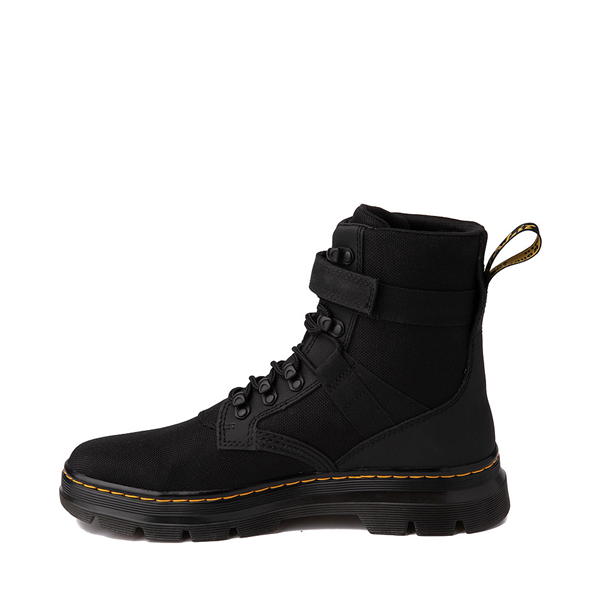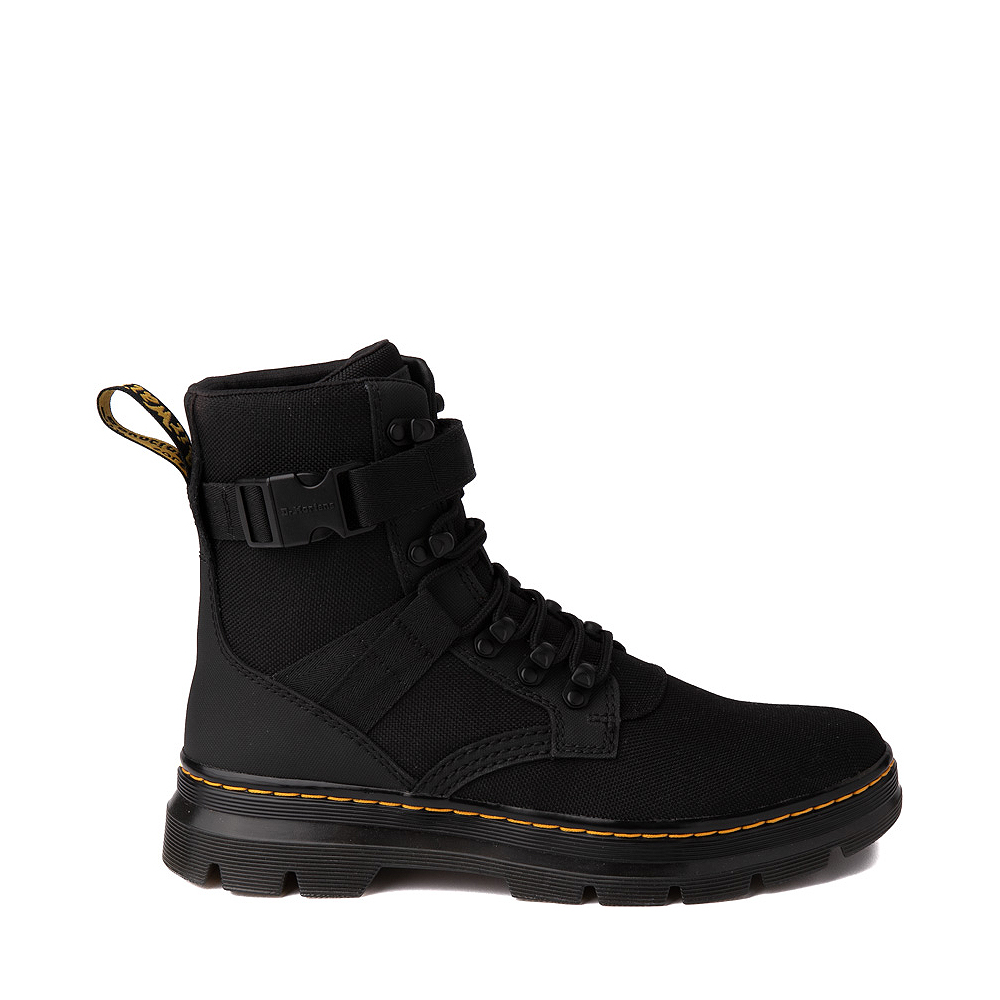Dr. Martens Combs Tech II Utility Boot - Black
Or 4 interest-free payments with
or

When fashion gets tough, the tough get tougher. Enter the new Combs Tech II Utility Boot from Dr. Martens! The Combs Tech II Boot rocks a durable upper made with a mix of Extra Tough 50/50 textile and Ajax leather, lace closure with hook-and-loop strap for a secure fit, and lightweight Tract outsole with cemented construction and deep tread for premium traction.
ORDER IN YOUR NORMAL U.S. SIZES
- Durable upper made with a mix of Extra Tough 50/50, a synthetic woven fabric made from 50% recycled plastic and Ajax, a PU-coated split leather with a fine geometric emboss
- Lace closure with hook-and-loop strap offers a secure fit
- Classic heel pull loop
- Cushioned footbed provides lasting comfort
- Cemented sole construction with signature yellow stitching
- Relaxed Tract outsole is tough and light, with pavement-ready durable cemented construction and deep indentations for improved traction
When the Dr. Martens boot first catapulted from a working-class essential to a countercultural icon back in the 1960s, the world was pre-internet, pre-MTV, pre-CD, pre-mp3s, pre-mobile phones… hey, they’d only just invented the teenager. In the years before the boot’s birthday, April 1, 1960; kids just looked like tribute acts to their parents, younger but the same. Rebellion was only just on the agenda for some - for most kids of the day, starved of music, fashion, art and choice, it was not even an option. But then an unlikely union of two kindred spirits in distinctly different countries ignited a phenomenon.
In Munich, Germany, Dr. Klaus Maertens had a garage full of inventions, including a shoe sole almost literally made of air; in Northampton, England, the Griggs family had a history of making quality footwear and their heads were full of ideas. They met, like a classic band audition, through an advert in the classified pages of a magazine. A marriage was born, an icon conceived of innovation and self-expression.
Together they took risks.
They jointly created a boot that defined comfort but was practical, hard-wearing and a design classic. At first, like some viral infection, the so-called 1460 stooped near to the ground, kept a low profile, a quiet revolution. But then something incredible started to happen. The postmen, factory workers and transport unions who had initially bought the boot by the thousand, were joined by rejects, outcasts and rebels from the fringes of society.
At first, it was the working-classes; before long it was the masses.









 Size Chart
Size Chart






